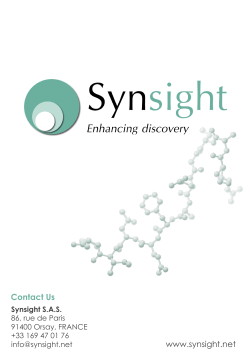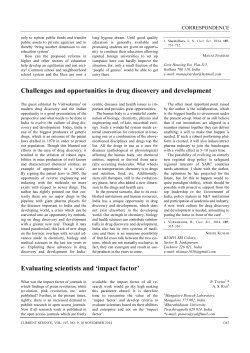
To STEAM Project Criteria information for
STEAM SHOWCASE PROJECT GUIDELINES STEAM Showcase Project Criteria You may have an idea or a cool project in mind, but how do you present it to the public? How do you “show off” your ideas in a way that others can understand and appreciate? Sometimes it depends on your specific topic, but here are some general guidelines: Steps of the Scientific Method 1. Ask a Question: The scientific method starts when you ask a question about something that you observe: How, What, When, Who, Which, Why, or Where? And, in order for the scientific method to answer the question it must be about something that you can measure, preferably with a number. 2. Do Background Research: Rather than starting from scratch in putting together a plan for answering your question, you want to be a savvy scientist using library and Internet research to help you find the best way to do things and insure that you don't repeat mistakes from the past. 3. Construct a Hypothesis: A hypothesis is an educated guess about how things work: "If _____[I do this] _____, then _____[this]_____ will happen." You must state your hypothesis in a way that you can easily measure, and of course, your hypothesis should be constructed in a way to help you answer your original question. 4. Test Your Hypothesis by Doing an Experiment: Your experiment tests whether your hypothesis is supported or not. It is important for your experiment to be a fair test. You conduct a fair test by making sure that you change only one factor at a time while keeping all other conditions the same. You should also repeat your experiments several times to make sure that the first results weren't just an accident. 5. Analyze Your Data and Draw a Conclusion: Once your experiment is complete, you collect your measurements and analyze them to see if they support your hypothesis or not. Scientists often find that their hypothesis was not supported, and in such cases they will construct a new hypothesis based on the information they learned during their experiment. This starts the entire process of the scientific method over again. Even if they find that their hypothesis was supported, they may want to test it again in a new way. 6. Communicate Your Results: To complete your science fair project you will communicate your results to others in a final report and/or a display board. Professional scientists do almost exactly the same thing by publishing their final report in a scientific journal or by presenting their results on a poster at a scientific meeting. In a science fair, judges are interested in your findings regardless of whether or not they support your original hypothesis. Steps of the Engineering Design Process 1. Define the Problem. The engineering design process starts when you ask the following questions about problems that you observe: What is the problem or need? Who has the problem or need? Why is it important to solve? [Who] need(s) [what] because [why]. 2. Do Background Research: Learn from the experiences of others — this can help you find out about existing solutions to similar problems, and avoid mistakes that were made in the past. So, for an engineering design project, do background research in two major areas: a.) Users or customers b.) Existing solutions 3. Specify Requirements: Design requirements state the important characteristics that your solution must meet to succeed. One of the best ways to identify the design requirements for your solution is to analyze the concrete example of a similar, existing product, noting each of its key features. 4. Brainstorm Solutions: There are always many good possibilities for solving design problems. If you focus on just one before looking at the alternatives, it is almost certain that you are overlooking a better solution. Good designers try to generate as many possible solutions as they can. 5. Choose the Best Solution: Look at whether each possible solution meets your design requirements. Some solutions probably meet more requirements than others. Reject solutions that do not meet the requirements. 6. Develop the Solution: Development involves the refinement and improvement of a solution, and it continues throughout the design process, often even after a product ships to customers. 7. Build a Prototype: A prototype is an operating version of a solution. Often it is made with different materials than the final version, and generally it is not as polished. Prototypes are a key step in the development of a final solution, allowing the designer to test how the solution will work. 8. Test and Redesign: The design process involves multiple iterations and redesigns of your final solution. You will likely test your solution, find new problems, make changes, and test new solutions before settling on a final design. 9. Communicate Results: To complete your project, communicate your results to others in a final report and/or a display board. Professional engineers always do the same, thoroughly documenting their solutions so that they can be manufactured and supported. Possible Project Themes BEHAVIORAL AND SOCIAL SCIENCES Clinical & Developmental Psychology Cognitive Psychology Physiological Psychology Sociology BIOLOGICAL SCIENCES Animal Sciences Animal Behavior Animal Development Animal Ecology Animal Genetics Animal Nutrition & Growth Animal Pathology Animal Physiology Animal Systematics & Evolution Cellular & Molecular Biology Cellular Biology Cellular & Molecular Genetics Immunology Molecular Biology Earth & Planetary Science Climatology, Weather Geochemistry, Mineralogy Historical Paleontology Geophysics Planetary Science Tectonics Microbiology Antimicrobial Agents Applied Microbiology Bacterial Microbiology Environmental Microbiology Microbial Genetics Virology Plant Sciences Agronomy Development and Growth Ecology Genetics/Breeding Pathology Physiology Systematics and Evolution CHEMISTRY & HEALTH SCIENCES Biochemistry Analytical Biochemistry General Biochemistry Medicinal Biochemistry Structural Biochemistry Chemistry Analytical Chemistry Environmental Chemistry Inorganic Chemistry Materials Chemistry Organic Chemistry Physical Chemistry Medicine & Health Sciences Disease Diagnosis & Treatment Epidemiology Genetics Molecular Biology of Diseases Physiology & Pathophysiology MATH & COMPUTER SCIENCE Computer Sciences Algorithms, data bases Artificial Intelligence Networking & Communications Computational Science, computer graphics Software Engineering, programming languages Computer System, operating system Mathematical Sciences Algebra Analysis Computer Mathematics Combinatorics, Graph Theory & Game Theory Geometry & Topology Number Theory Probability & Statistics Other ENGINEERING Electrical & Mechanical Electrical Engineering, Computer Engineering, Controls Mechanical Engineering Robotics Thermodynamics, solar Materials & Bioengineering Bioengineering Civil Engineering, construction engineering Chemical Engineering Industrial Engineering, processing Material Science ENERGY & TRANSPORTATION Aerospace & Aeronautical Engineering, aerodynamics Alternative Fuels Fossil Fuel Energy Vehicle Development Renewable Energies Environmental Management Bioremediation Ecosystems Management Environmental Engineering Land Resource Management, forestry Recycling, waste management Environmental Sciences Air Pollution & Air Quality Soil Contamination & Soil Quality Water Pollution & Water Quality PHYSICAL SCIENCES Physical Science Physics & Astronomy Atomic, Molecular, & Optical Physics Astronomy & Cosmology Biological Physics Condensed Matter & Materials Instrumentation & Electronics Magnetics, electromagnetics and plasmas Mechanics Nuclear & Particle Physics Optics, Lasers, Masers Theoretical Physics
© Copyright 2025

![[35] The Default Bayesian Test is Prejudiced Against](http://cdn1.abcdocz.com/store/data/001092197_1-5d6aeaa424ad1857b9e3610bc24d4fcf-250x500.png)








